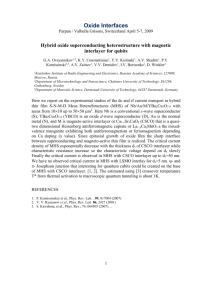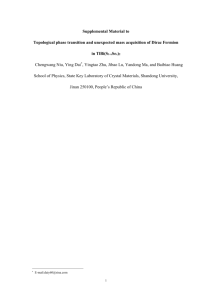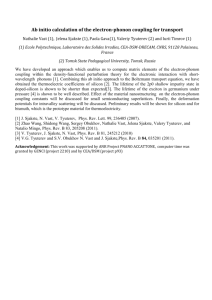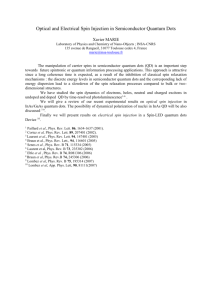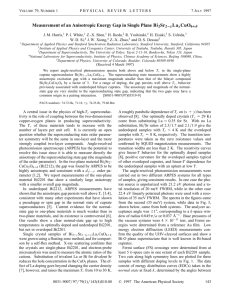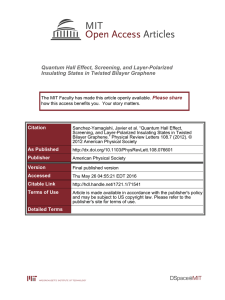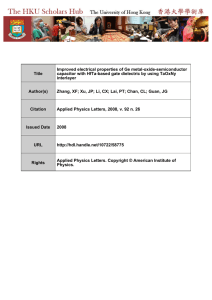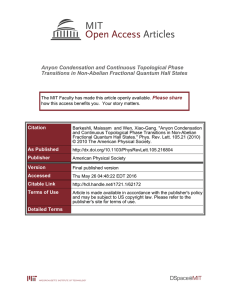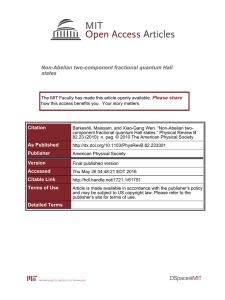SupplementalInformation
advertisement
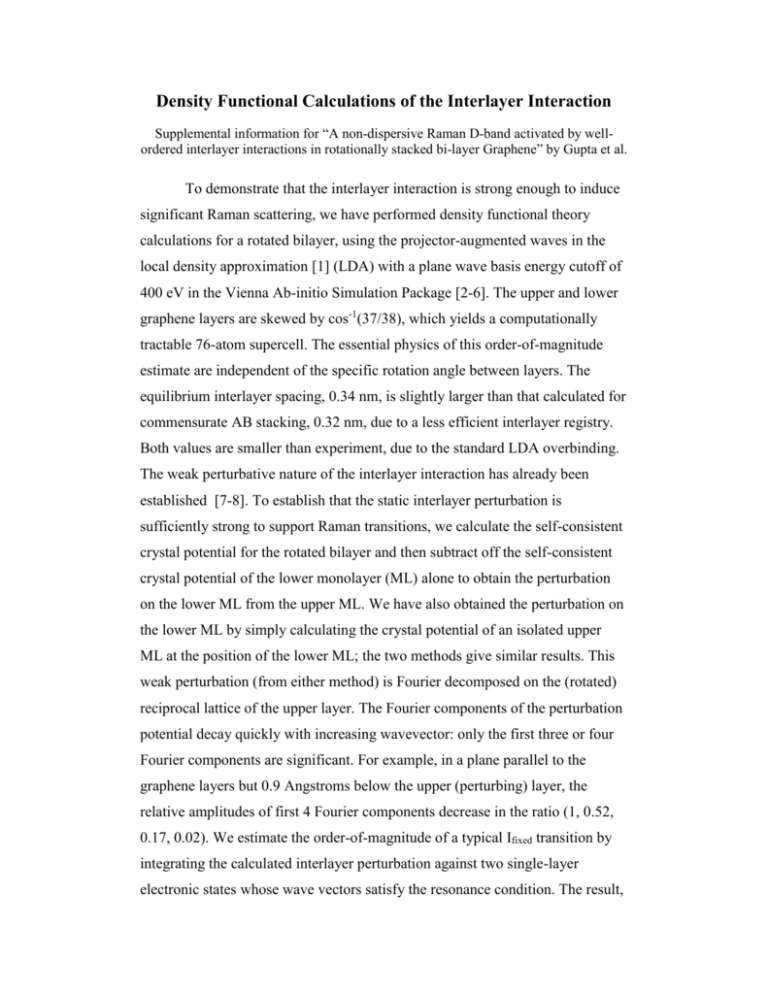
Density Functional Calculations of the Interlayer Interaction Supplemental information for “A non-dispersive Raman D-band activated by wellordered interlayer interactions in rotationally stacked bi-layer Graphene” by Gupta et al. To demonstrate that the interlayer interaction is strong enough to induce significant Raman scattering, we have performed density functional theory calculations for a rotated bilayer, using the projector-augmented waves in the local density approximation [1] (LDA) with a plane wave basis energy cutoff of 400 eV in the Vienna Ab-initio Simulation Package [2-6]. The upper and lower graphene layers are skewed by cos-1(37/38), which yields a computationally tractable 76-atom supercell. The essential physics of this order-of-magnitude estimate are independent of the specific rotation angle between layers. The equilibrium interlayer spacing, 0.34 nm, is slightly larger than that calculated for commensurate AB stacking, 0.32 nm, due to a less efficient interlayer registry. Both values are smaller than experiment, due to the standard LDA overbinding. The weak perturbative nature of the interlayer interaction has already been established [7-8]. To establish that the static interlayer perturbation is sufficiently strong to support Raman transitions, we calculate the self-consistent crystal potential for the rotated bilayer and then subtract off the self-consistent crystal potential of the lower monolayer (ML) alone to obtain the perturbation on the lower ML from the upper ML. We have also obtained the perturbation on the lower ML by simply calculating the crystal potential of an isolated upper ML at the position of the lower ML; the two methods give similar results. This weak perturbation (from either method) is Fourier decomposed on the (rotated) reciprocal lattice of the upper layer. The Fourier components of the perturbation potential decay quickly with increasing wavevector: only the first three or four Fourier components are significant. For example, in a plane parallel to the graphene layers but 0.9 Angstroms below the upper (perturbing) layer, the relative amplitudes of first 4 Fourier components decrease in the ratio (1, 0.52, 0.17, 0.02). We estimate the order-of-magnitude of a typical Ifixed transition by integrating the calculated interlayer perturbation against two single-layer electronic states whose wave vectors satisfy the resonance condition. The result, ~0.15 meV, is about 1000 times smaller than a typical electron-phonon matrix element between similar states [9, 10], which is consistent with the experimentally measured relative peak intensities of the I-band and the main Raman peaks. We can also explain the qualitative evolution of the strength of the interlayer mode at fixed frequency, Ifixed (see the main text for a description of this mode), with laser excitation. Experimentally, the strength of Ifixed increases with increasing laser excitation energy. Under the standard assumption of constant matrix elements, we have calculated the double-resonant transition amplitude MDR for phonon = 0.1675 eV on a 100 x 100 reciprocal space grid (interpolated to 3000 x 3000 by triangular interpolation), using the 76-atom supercell described earlier. Upon increasing the laser energy from 2.5 eV to 3 eV, the variation in MDR is consistent with the experimental trend: it increases by factors of 2.4, 1.8 and 1.7 for G = (0,2), (-2,1) and (0,3) respectively [i.e. the three highlighted G of Fig. 3, each of which satisfies double resonance for = cos-1(37/38)]. References: [1] [2] [3] [4] [5] [6] [7] [8] [9] [10] J. P. Perdew and A. Zunger, Phys. Rev. B 23, 5048 (1981). H. J. Monkhorst and J. D. Pack, Phys. Rev. B 13, 5188 (1976). G. Kresse and J. Furthmüller, Phys. Rev. B 54, 11169 (1996). G. Kresse and J. Furthmüller, Comput. Mater. Sci. 6, 15 (1996). P. E. Blöchl, Phys. Rev. B 50, 17953 (1994). G. Kresse and J. Hafner, Phys. Rev. B 47, 558 (1993). J. M. B. Lopes dos Santos, N. M. R. Peres and A. H. Castro Neto, Phys. Rev. Lett. 99, 256802 (2007). S. Latil, V. Meunier and L. Henrard, Phys. Rev. B 76, 201402 (2007). G. D. Mahan, Phys. Rev. B 75, 125409 (2003). A. H. Castro Neto and F. Guinea, Phys. Rev. B 75, 045404 (2007).
